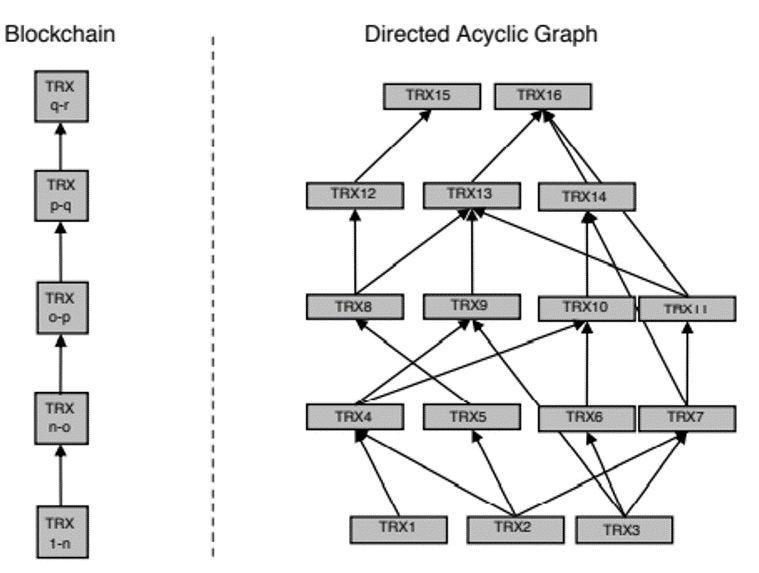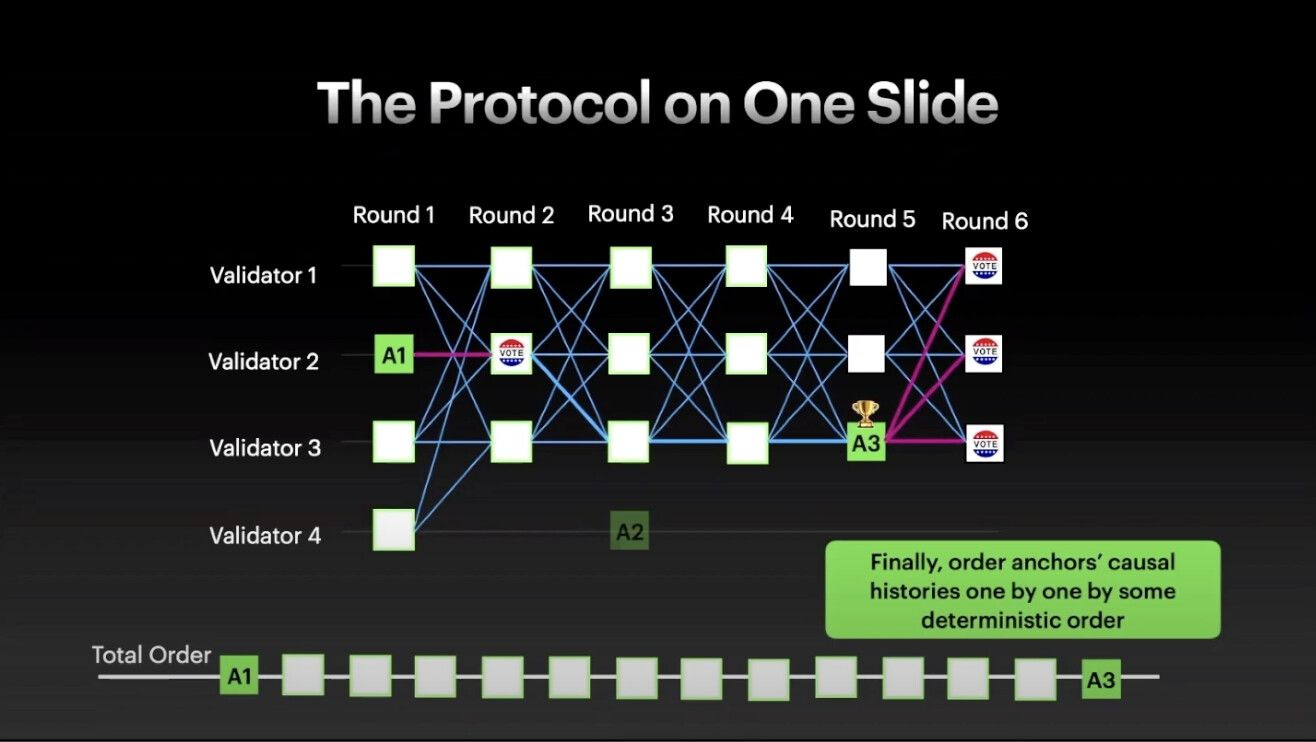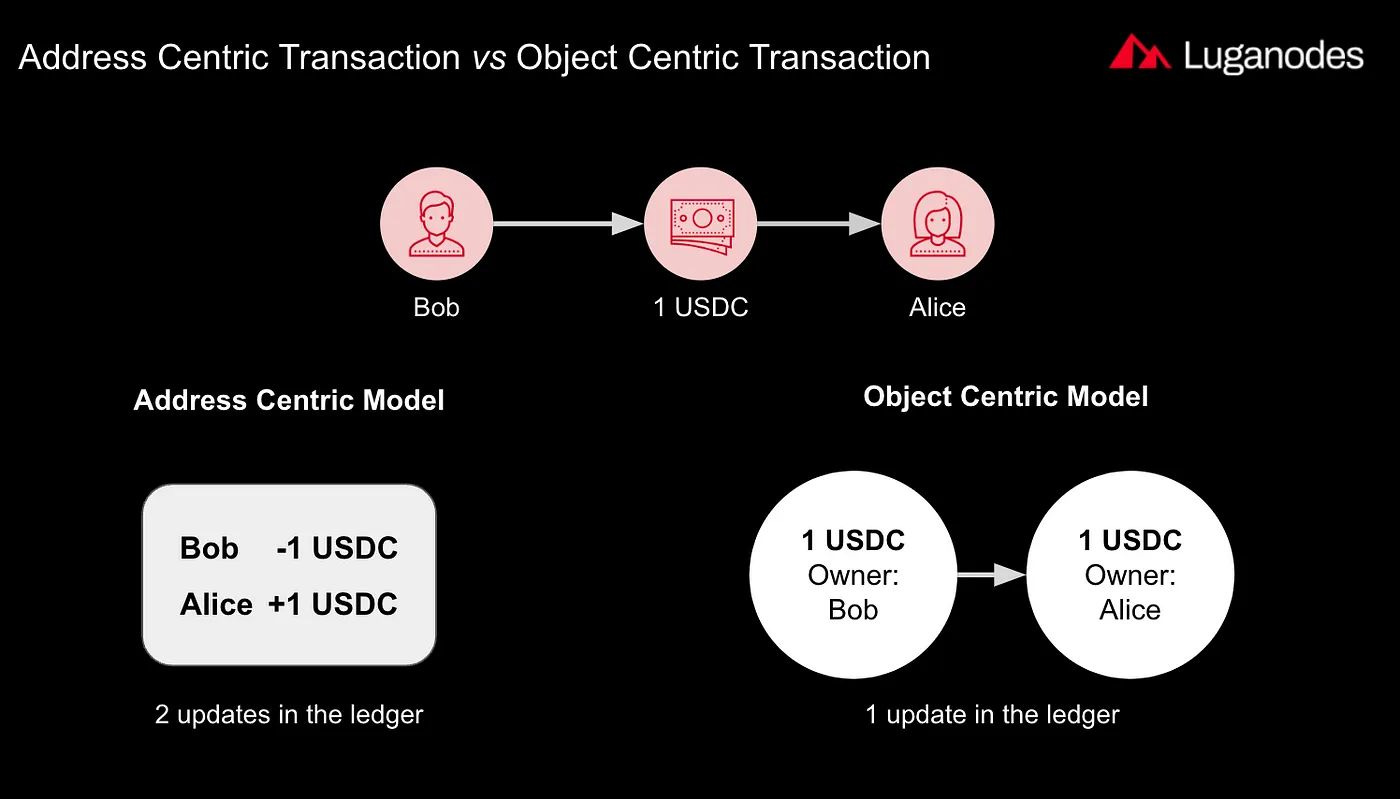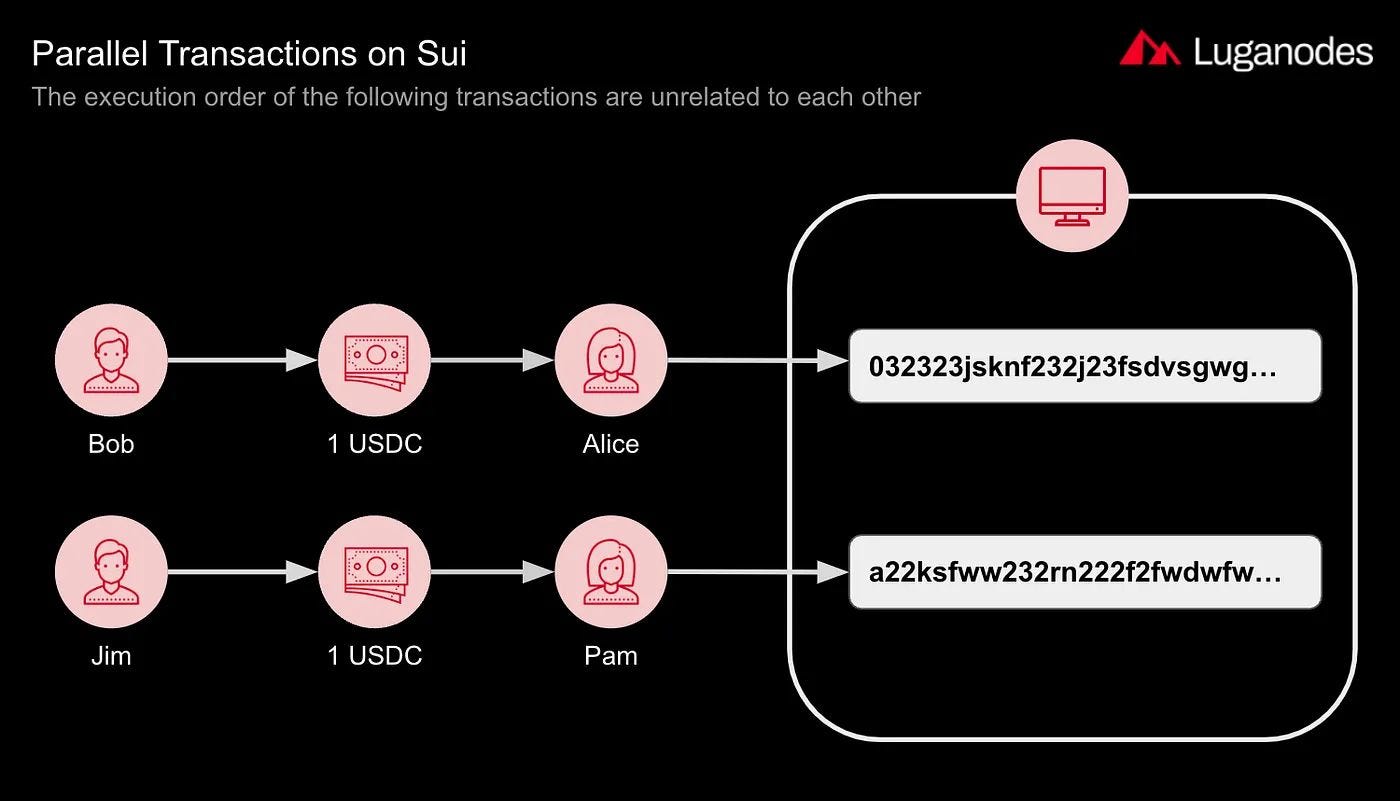【Sui Complete Review (Part 1)】Transition from Birth to Launch / Mysten Labs and Sui Foundation / Consensus Mechanism and Processing Process / Object Data Model / @SuiNetwork
This is an in-depth look at Sui as of September 2024.
Good morning.
Mitsui from web3 researcher.
TodayKuripto Kuriptois a contributed article by Mr. Kuripto.In a series of three articles titled "Sui Complete Review," he explained everything about Sui as of September 2024.It will be updated for 3 consecutive days starting today.It was very informative for me as well, please read to the end!
When I started to write a complete review article on Sui, I created a rough table of contents, but it turned out to be a huge amount of work (lol).Therefore, I have decided to divide this report into three parts: Part I, Part II, and Part III.Reading all of this report at once would require a great deal of stamina, but we hope you will be able to stay with us until the end.
Why such a long article in the first place?
It is because Sui has so many topics to talk about.Sui today has the highest processing speed of all blockchains and theoretically unlimited scalability.And in just less than a year, the ecosystem has grown and attracted up to $750 million in TVL.In addition, the first consumer game console is scheduled to be launched in 2025 as a Web3 project.
There are many high-performance blockchains.Why do we need Sui instead of Solana?
In this report, we hope to explore the answers and present them to you.
1. Sui from birth to launch
2. Mysten Labs and Sui Foundation
3. Rethinking the Value of Layer 1 Blockchain
4. ConsensusMechanisms and Processing Processes
5. What is the Object Data Model?
1. Sui from birth to launch
Sui's story begins with Meta's (formerly Facebook) blockchain project "Diem" (formerly Libra) In 2018, Meta assembled a team of experts in cryptocurrency, programming, and distributed systems to build a global payment network, the Libraproject.At the heart of the project was Move, a programming language for smart contracts developed for Libra.
Despite its grand vision, however, Libra faced strong opposition from regulators; in 2019, a number of key partners pulled out of the project, and Libra attempted to start anew by rebranding itself to "Diem."
However, in the summer of 2021, the future of the project became even more grim when the Federal Reserve's General Counsel raised concerns about Diem's stable coin project.Realizing that they could not move forward any further, the Meta developers decided to leave Meta to find new uses for the Move language they had built.Looking to the future, they founded Mysten Labs, a blockchain development company, in September 2021.
Meet the team members.
Evan Cheng, CEO of Mysten Labs, worked at Apple before joining Meta, where he led the LLVM backend team.Evan and Chris Lattner shared the 2013 ACM Software System Award for their work on LLVM.
CPO Adeniyi Abiodun was a senior software engineer at JP Morgan and HSBC and worked on blockchain design at Oracle.He oversaw product at VMware before leading product development at Meta.
CTO Sam Blackshear is best known for creating Move, Sui's programming language, during his tenure as principal engineer at Meta.He also made significant contributions to the Diem project, including participation in the Libra Blockchain paper.
Security and privacy engineering expert George Danezis was a professor of security and privacy engineering at the prestigious University College London in the UK for 10 years.He is also the creator of Mysticeti, Sui's new consensus algorithm.
And renowned cryptographer Konstantinos Chalkias led the cryptography teams at Meta and R3.He was also the co-creator of zkLogin, Sui's seamless onboarding framework, and worked on Stashed's predecessor, zkSend, among others.
After founding Mysten Labs, they devoted themselves to the development of Sui, a new blockchain based on Move, to build a blockchain of the highest quality.Finally, on May 3, 2023, Sui was officially launched.This moment was both the end of a long journey and a new beginning.
2. Mysten Labs and Sui Foundation
Two important entities involved in the Sui project are Mysten Labs and the Sui Foundation.While they play different roles, they work together to support the development of the network.
Mysten Labs
Mysten Labs is a commercial company leading the technical development of the Sui network.Their primary role is to build the technical foundation for Sui and to design and implement the blockchain using the Move programming language.In fact, Mysten Labs is driving Sui's innovation by releasing new technologies one after another.In addition, Mysten Labs supports the development of various products and services within the Sui ecosystem by providing developer tools, SDKs (Software Development Kits), and technical support.
Sui Foundation
The Sui Foundation is a non-profit organization that supports the growth of the Sui ecosystem.Typically, the role of the foundation is to operate a mechanism for community voting and decision making on network policies, updates, and improvement proposals, but since Sui currently has no community governance mechanism, the Sui Foundation is essentially the driving force behind the project.The Sui Foundation will fund startups and protocols that operate on the Sui network to grow the ecosystem.The Sui Foundation is also actively involved in educational activities related to Sui, including running The Sui Blog and providing opportunities for workshops and events.
Although Mysten Labs and the Sui Foundation are two different and independent organizations, they work closely together and the Mysten Labs founders team has an influence on the Sui Foundation.
3. rethinking the value of layer 1 blockchains
Sui is a vertically integrated blockchain that competes with Solana, Aptos, Sei, Monad, and others.Many would consider the high-performance blockchains since Solana to be boring narratives that simply create new stories with existing technology.
Due to the fundamentally open source nature of the Web3 world, products are easily imitated.Therefore, once an area is deemed promising, many will imitate it and enter the market.This is why a large number of layer 1 blockchains appeared in 2021 and 2022, turning Web3 into a dead sea of blockchains (this phenomenon is now moving to Ethereum layer 2).
Does this mean that building a layer 1 blockchain no longer makes sense?
Certainly, we are no longer in an era where Layer 1 blockchains are as high profile as they used to be.However, assuming that layer 1 blockchain can still provide meaningful differentiation today, there is still an opportunity in the market.In other words, only fundamentally legitimate philosophies and technologies are significant enough to exist as the new Layer 1.
Sam Blackshear, creator of the Move language, states that "the utility of a smart contract platform is proportional to the amount of interesting shared state that programs running on that platform can access atomically."Perhaps this is the essential value of vertically integrated blockchains.
In this regard, I think Sui's zkSend, zkLogin, and the various Sui architectures that enable dynamic NFTs are showing us how blockchains should evolve to achieve true mass adoption.
The most important feature that sets Sui apart from other layer 1 blockchains is its ability to enable "seamless interaction between applications".This is not just a technical improvement, but an attempt to redefine the essence of the blockchain.
4. consensus mechanism and processing process
Sui's consensus mechanism was introduced in July 2024 with a new consensus engine called Mysteceti, which further improves on the previous consensus process with an amazingly low latency, only 390 milliseconds.
Before Mysteceti was implemented, the consensus mechanism was Narwhal + Bullshark.To understand how Mysteceti has changed from the previous model, I would like to first explain what Narwhal and Bullshark protocols are.
4-1. Old method: Narwhal and Bullshark
Narwhal and Bullshark divide the traditional consensus process into two protocols that can be processed in parallel: Narwhal is a protocol that hashes transactions and shares them with validators for efficient management of mempools.Bullshark is a protocol that stores the hash values in blocks and is responsible for validation and ordering.Each is explained in detail.
What is Narwhal?
Narwhal is, in a nutshell, a mempool propagation protocol that greatly improves the efficiency of sharing transactional data between validators.To be precise, Narwhal itself is not a consensus engine, but works as a function to support the consensus process.
Let's look at how Narwhal is superior to traditional blockchains.
In a traditional blockchain, when a transaction is sent to a validator, all validators exchange and share transaction information, which is then ordered and temporarily stored in a mempool.The validators would then store the transaction in the mempool in a block, and a specific validator selected by PoS or other means would perform block generation, and then propagate the block data again throughout the network for verification by the entire network.This is a problem of double transmission, which slows down the process and overloads the network, which has been an issue with conventional blockchain.
Narwhal solves this double transmission problem by ensuring that the data in each validator's mempool is consistent.Specifically, instead of propagating transaction data sent from an account to the network as in the past, Narwhal consolidates multiple transaction data into "batches," hashes (cryptographically) them, and then broadcasts the hash values to all validators.
Because hash values output completely different values if the input data differs even slightly, the validator guarantees the consistency of the transaction data in its possession by matching it.This is the basic mechanism of Naewhal.The validator in charge of this Naewhal work is called a "Worker".
The advantage of Narwhal is that Narwhal communicates only the hash values of a batch, whereas traditional blockchains communicate transaction data, making communication much more efficient.
What is Bullshark?
Bullshark can work in parallel with Narwhal and is responsible for block generation and ordering.Once a validator called "Primary" receives the hash value, it determines a consensus based on the DAG (Directed Acyclic Graph) structure.
A DAG is, in essence, a parallel processing system, but it has the property that there are multiple routes for processing data, and on each route the data goes one way and not the same way. in Bullshark, each validator has a DAG with the same direction and values, so that the sametotal order is reached.
Bullshark performs this round-based DAG consensus.
In even-numbered rounds, a leader (anchor) is chosen, who proposes a block of transactions.In odd-numbered rounds, each validator votes for the leader block proposed in the previous even-numbered round.
Once the leader block has received the necessary votes, it is authenticated and its order within the DAG is determined.This process ensures that transactions within a round are processed in the correct order.
Narwhal + Bullshark
Let's summarize the process of Sui's Narwhal and Bullshark.
The Client (the account sending the transaction) sends the transaction to the network.
Workers collect the transactions, batch process them, and hash them.
The hash value is broadcast to the network and shared with other workers.
The hash values of the batch are stored in the Worker's mempool.
The batch hash values are sent to Primary.
The Primary stores these hash values in a block and proposes the block to other Primaries.
Each Primary verifies the block and collects signatures.
Once the necessary signatures are gathered, a certificate is issued and the block is included in the next round.
Validators vote on the blocks proposed in the previous round.
Once consensus is achieved, the transactions in these batches are fully ordered (finality finalized).
After execution, the validator sends an execution result message, allowing the client to verify the finality of the settlement.
The consensus mechanism of Narwhal and Bullshark is to execute this efficient consensus method (Bullshark) and mempool validation (Narwhal) concurrently.
As an additional note, the Sui blockchain uses Delegated Proof of Stake (DPoS), and the validators selected in DPoS are eligible to participate in Bullshark's consensus protocol.From among these validators, a validator is selected to serve as an anchor for each specific round.
4-2. New method (from July 2024): Mysticeti
Mysticeti is the latest consensus mechanism in the Sui network and has succeeded in significantly reducing transaction settlement finality (latency) time.Under optimal conditions, the Time to Finality (TTF) is approximately 390 milliseconds.This is a significant improvement over Narwhal & Bullshark's TTF of about 2 seconds.Here is a video comparison of the swap speed with Solana, which will give you an idea of how great it is.
What has Mysticeti changed?
Narwhal & Even with Bullshark, the consensus was very fast and users had no complaints, but there were some challenges when looking ahead to the future direction of the Sui network.
During the Bullshark phase, validators had to propose blocks, vote on them, and finally add the certified blocks.This process incurred multiple message delays and increased latency.
Bullshark uses even rounds to propose blocks for addition, and odd rounds for voting and authentication.This meant that there was a certain amount of time between when the primary received the hash of the batch and when the block was added.
Bullshark required the signatures of a majority of validators to authenticate a block.This increased the load and latency, especially for validators who were behind in synchronization.
Thus, the Bullshark phase left room for more time savings.
Mysticeti was developed to address these issues.Below are the changes from Narwhal and Bullshark to Mysticeti.
Change 1: Implicit Certificates
Whereas in the past a validator had to go through the process of collecting signatures for each block and issuing certificates based on those signatures, Mysticeti has added a feature called "Implicit Certificates" that allows the leader to include certificates when proposing a blockHowever, Mysticeti has added a feature called "Implicit Certificates" that allows leaders to include certificates when proposing blocks.This eliminates the need for additional certificate issuance and reduces message delays.
Change 2: Pipelining
Pipelining is a technique in which tasks are divided into multiple stages and processed sequentially.Each stage runs in parallel, passing the results of processing to the next stage; in Mysticeti, the proposal, voting, and certification rounds run in parallel.
This allows the next round to begin without waiting for each round to be completed.For example, while the leader is proposing a new block in one round, the validator can vote on the block proposed in the previous round in another round, thus streamlining the process.
Change 3: Universal Commit Rule
The Universal Commit Rule consists of a set of rules and procedures that allow multiple leaders to propose blocks simultaneously and have those blocks committed quickly.
In a traditional Bullshark, one leader at a time proposes a block, whereas in Mysticeti, multiple leaders can propose blocks at the same time.This allows for more opportunities for multiple leaders to commit to a proposed block at the same time.
Let me illustrate the Mysticeti consensus process with a concrete example.
The client (the account sending the transaction) sends the transaction to the network.
Worker collects transactions, batch processes and hashes them
The hash value is broadcast to the network and shared with other Workers.
The hash value of the batch is stored in the Worker's mempool.
The hash values of the batch are sent to Primary.
Primary stores these hash values in blocks and proposes blocks to other Primary.
In round 1, leader A is selected from among the Primary and proposes a new block.This block contains Implicit Certificates and links to blocks from the previous round.
In round 2, the other PrimaryB, C, and D validate the block proposed by Leader A and broadcast a voting message to the entire network.
The voting message is collected and the block is authenticated once the necessary signatures are in place.(Rounds 7~8 are processed in parallel by pipelining without waiting for completion.)
Transactions in the batch are now completely sequenced.(Finality finalization)
After execution, the validator sends an execution result message, allowing the client to confirm the finality of the settlement.
The above is a detailed description of Mysticeti.
5. What is the object data model?
This section describes Sui's asset management model.Traditional blockchains use asset management models such as the account model.
Most smart contract-enabled chains such as Ethereum, Solana, BNB Chain, Polygon, Avalanche, and Aptos fall into this category.Sui, on the other hand, employs a unique asset management model called the Object Model, which contributes greatly to Sui's security and efficiency.
In the account model, all important data, such as assets, are also managed on an account basis, and increases and decreases in assets are represented by changing the account status. sui treats the basic unit of any data, including digital assets, as an "object.Ownership or transfer can be expressed by changing the ownership of an object.
This is a completely different concept from traditional blockchain, which allows users to own and manage digital assets in an intuitive and secure manner.Objects are created by smart contracts, each of which is unique through a unique identifier.
This allows users to directly own "important data (i.e., resources)" on the Sui blockchain, as digital assets are not just numbers, but things that can be moved around on the network.
Some people who are familiar with the concept may think, "This sounds like a NFT with an identifier," and they are right.
This makes it possible to clearly tie the ownership of an object to an address.Even if an outside non-owner attempts to manipulate the object in an unauthorized manner, the non-owner will not be able to change the object's state.
There are many advantages to the object model, but this section describes the mechanism that enables efficient transaction processing.
In the previous section on the consensus mechanism, we discussed Sui's parallel processing process, which has been changed to Mysticeti to achieve more efficient parallel processing, and parallel processing itself has recently been adopted by many blockchains.
For example, Solana also implements a parallel processing function called Sealevelas explained in this article.But what makes Sui's parallel processing different from other blockchain parallel processing?
We must now explain the limitations of parallel processing.While the blockchain's parallel processing capability means that transactions can be processed simultaneously, it does not mean that all transactions can be processed at the same time; only transactions that are not dependent on each other can be processed concurrently.Dependent transactions are processed in order as in a typical blockchain to avoid inconsistencies.
This constraint itself is the same in both account-based and object-based models, but the object model is characterized by a tendency to reduce this kind of constraint in parallel processing.
Since transaction processing in the account model is only the process of changing the state of an account, the entire target account must be controlled, whereas in the object model, each object is handled independently, which reduces the risk of data conflicts during parallel processing,More transactions can be processed efficiently.
If you want to learn more about Sui's object model, please read my previous articlehere.
This is the "Sui Complete Review (Part I)".We will be updating this article tomorrow and the day after tomorrow, and over the next two days, we will be updating this article with commentary on Sui, so please look forward to it!
Disclaimer:I carefully examine and write the information that I research, but since it is personally operated and there are many parts with English sources, there may be some paraphrasing or incorrect information. Please understand. Also, there may be introductions of Dapps, NFTs, and tokens in the articles, but there is absolutely no solicitation purpose. Please purchase and use them at your own risk.
About us
🇯🇵🇺🇸🇰🇷🇨🇳🇪🇸 The English version of the web3 newsletter, which is available in 5 languages. Based on the concept of ``Learn more about web3 in 5 minutes a day,'' we deliver research articles five times a week, including explanations of popular web3 trends, project explanations, and introductions to the latest news.
Author
mitsui
A web3 researcher. Operating the newsletter "web3 Research" delivered in five languages around the world.
Contact
The author is a web3 researcher based in Japan. If you have a project that is interested in expanding to Japan, please contact the following:
Telegram:@mitsui0x
*Please note that this newsletter translates articles that are originally in Japanese. There may be translation mistakes such as mistranslations or paraphrasing, so please understand in advance.











